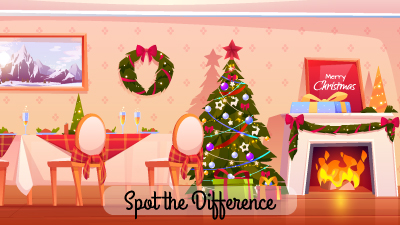What do the characters from our favourite books and movies look like on stage? Click here to find out.

Many of our favourite books and movies have been adapted to the stage in grand avatars. The stage has its limitations though; you cannot make an animal act on stage, or a genie appear out of a bottle. But this is where’s the creativity of the director and set designer shines through.
Take a look at some our of our favourite characters in their stage versions. Swipe left or right to see their movie/book version and how they were adapted on stage.
How much do you know about the developments around the COVID-19 vaccines? Take this quiz to find out…

This year has passed by in a blurry daze of the Coronavirus pandemic, lockdowns, getting used to the new normal, and more. The new year brings some hope in the form of the COVID-19 vaccines. Many organisations across the world have been racing against time to bring out the vaccine that can combat this deadly and seemingly unconquerable virus. How much do you know about the developments? Here’s a multiple choice quiz that will give you a peek into the details…
Take a look at the news from around the world. A variant of the coronavirus, travel bans, holiday schedules thrown out of gear and so much more.

What’s happening around the world? Well, first off US president-elect Joe Biden has received Pfizer’s Covid-19 vaccine. Biden has also chosen Indian-American Bharat Ramamurti as key member of his economic team. Christmas shoppers in the UK are rushing to buy their traditional Christmas fare as Prime Minister Boris Johnson imposes stricter measures for a lockdown. Pakistan government has granted permission for the construction of a Hindu temple in Islamabad, nearly six months after the work at the site was stopped apparently because of the pressure from the radical Islamic groups.
Click on these hotspots to see what else is happening.
Whether it is the Burj Khalifa or the Eiffel Tower, we have plenty of tall buildings in the world. Here’s a game that tests your knowledge of heights.

Did you think that competition is only in classes? Think again! In today’s world, anything that can be measured is a competition. Today, let us learn about how these architectural wonders are fighting it out to be seen as the world’s tallest!
Can you arrange these 10 structures in order of the height. Go from Tallest to Shortest.
‘Tis the season for a good challenge…Fa-la-la-la-la, la-la-la-la… How many objects in the Christmas list can you find?

Here’s a puzzle to get you into the spirit of the season.
Santa loves looking at Christmas decorations while flying in his sleigh above houses to deliver presents. One particular house has caught his eye because little Leena has left him a note with a challenge. Can Santa find the objects mentioned in Leena’s list, as he whizzes past her house?

Be Santa’s helper in this challenge and help him find the objects.
How much do you know about these renowned landmarks across your country?

What do you know about some of our country’s iconic government buildings? Did you know that the Kerala Secretariat, or “Huzur Cutchery”, was first built as the Royal Durbar Hall of the Travancore Maharajahs in 1869?
Fort St. George, in Chennai, then Madras, was the first English fortress built in India in 1644.
Mantralaya, earlier Sachivalaya, which is the administrative headquarters of the government of Maharashtra, was once a seven-story. Well, here’s a quiz that will help you find out more such titbits about the important government buildings in India.
Though he lived just for 32 years, Srinivasa Ramanujan left behind a legacy that considers him to be a genius. December 22, is National Mathematics Day, honouring a brilliant mathematician.


Here’s an activity to get you excited for the Christmas season. Can you spot all the differences?

Christmas is around the corner. Are you ready for the season? It’s the season to deck the house and go all out with decorations. Is your Christmas tree out yet? Are the presents bought? A hearty Christmas meal with the family is a great way to spend the day too. What are your plans for this festive season?
Here’s a game for you to play. Can you spot all the 12 differences?

Are you feeling stressed? Then pick up a book and read. Getting lost in a book can lower levels of cortisol, or other unhealthy stress hormones, by 67%. Did you know that? Try this True or False quiz to learn more.

Did you know that laughing is good for the heart and can increase blood flow by 20%? Or, that being an optimist can help you live longer? So look on the bright side. Here are some such facts that give you an idea about healthy living.
Try your hand at this True or False quiz and be surprised.
How good is your general knowledge pertaining to languages? Try this crossword to find out.

Did you know that today 7,117 languages are spoken around the world? Isn’t it mind-boggling? While we aren’t out to challenge you on your knowledge of these languages, here is one to test your knowledge about languages in general.
Good luck!











